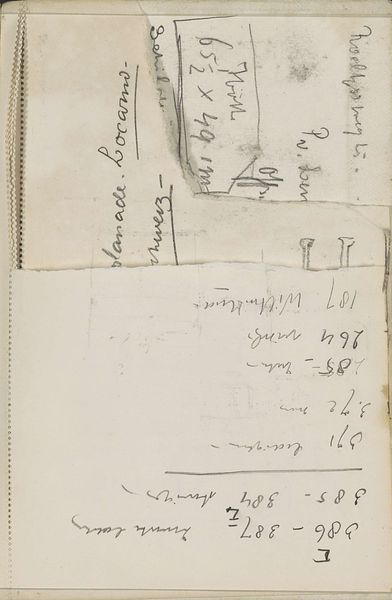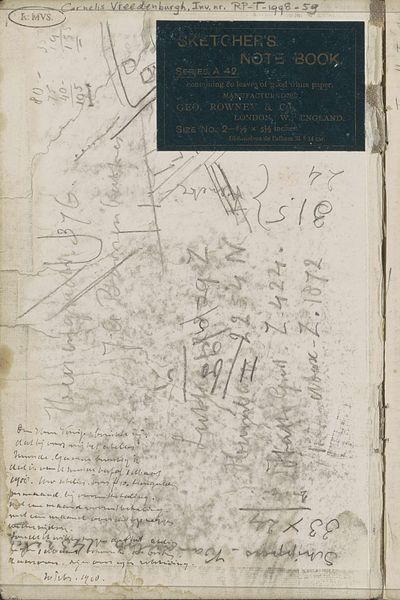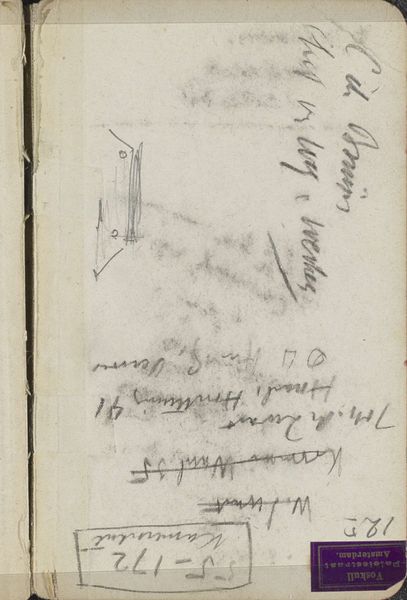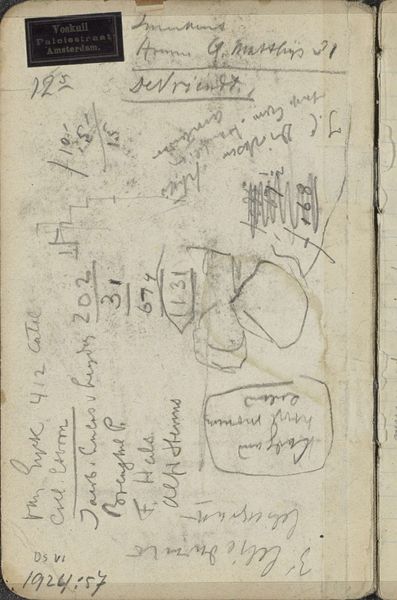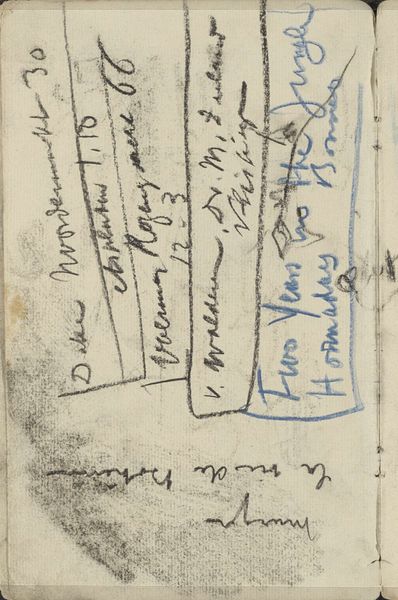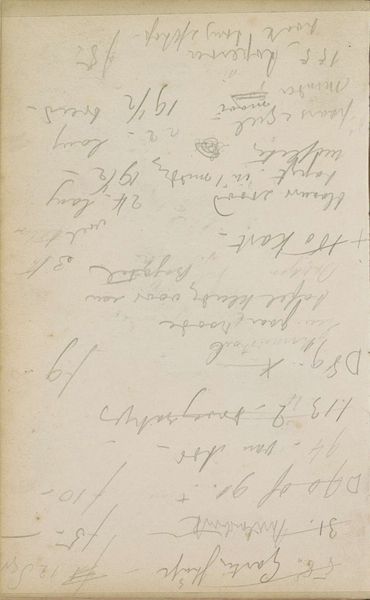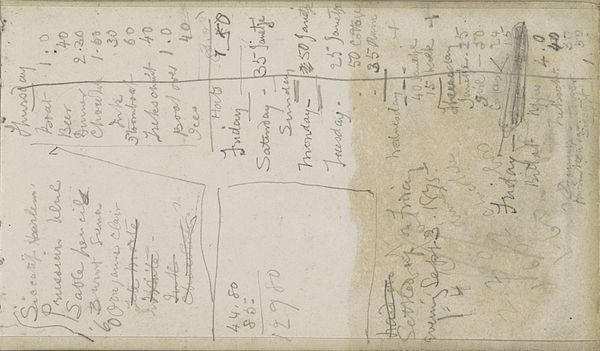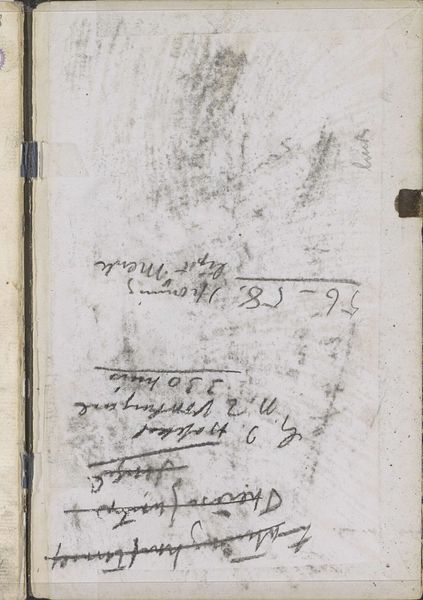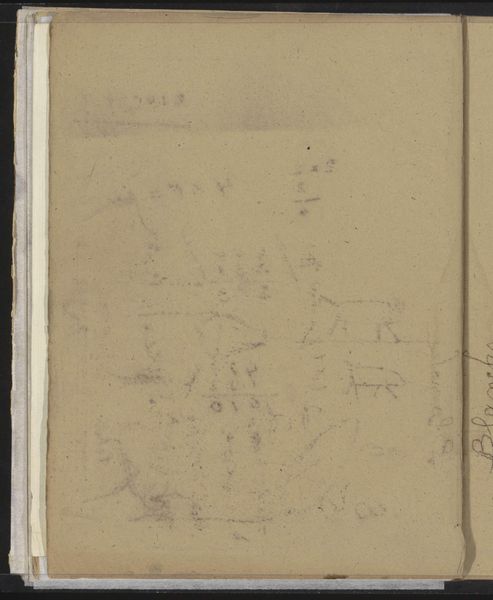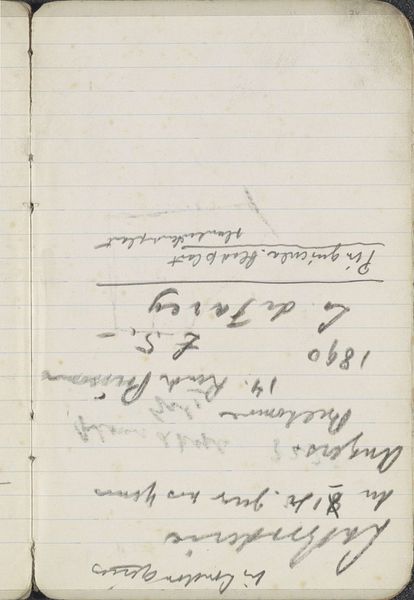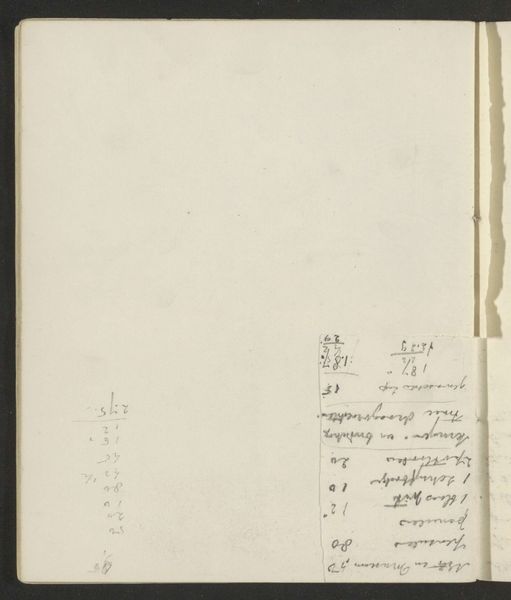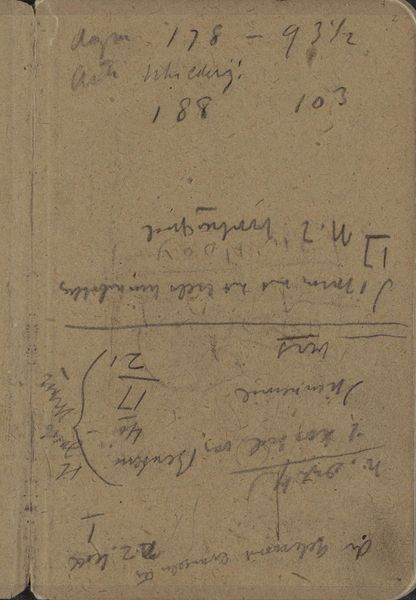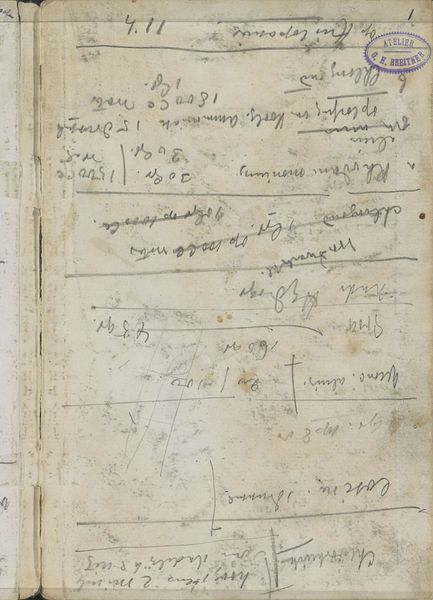
Copyright: Rijks Museum: Open Domain
Editor: Here we have Cornelis Vreedenburgh's "Theepot," dating from between 1890 and 1946. It’s a drawing on paper with pencil and ink, a preliminary sketch in what looks like a sketchbook. The whole thing has an ephemeral, almost scribbled quality. What stands out to you as you look at this? Curator: The apparent casualness belies a complex relationship to the labor of artistic production. Look at how the page is filled, almost cluttered, with sketches, calculations, and text. This isn’t just about representing a "Theepot;" it's a record of artistic and possibly commercial transactions. How does the juxtaposition of the "Theepot" sketch with numerical notations alter your understanding of artistic value? Editor: That’s interesting. I hadn't considered the monetary notes in relation to the image. So, is it about more than just aesthetics? Curator: Precisely. Think about the role of the sketchbook itself. It's a space for the artist's private experimentation and financial tracking to merge. The materiality of the paper, the pencil marks, the ink – these become evidence of the artist's hand and a window into the economic realities shaping their work. Does this change your perception of the drawing's 'authenticity' or 'artistic merit?' Editor: I guess it challenges the idea of the artist as solely focused on inspiration. The visible labor and business elements make it feel much more grounded, like art is also a job. Curator: Indeed. It forces us to consider the societal structures and the economics that underpins all artistic creation. The value we assign to art often obscures these material conditions of its production. What’s your take on this blurring of art and labor? Editor: It makes me appreciate the artist’s process even more. It’s a raw, unfiltered glimpse behind the scenes. I will certainly look at sketches and unfinished work differently now, understanding they hold multiple layers of meaning. Curator: Agreed. Paying attention to the material reality reframes how we engage with art.
Comments
No comments
Be the first to comment and join the conversation on the ultimate creative platform.
